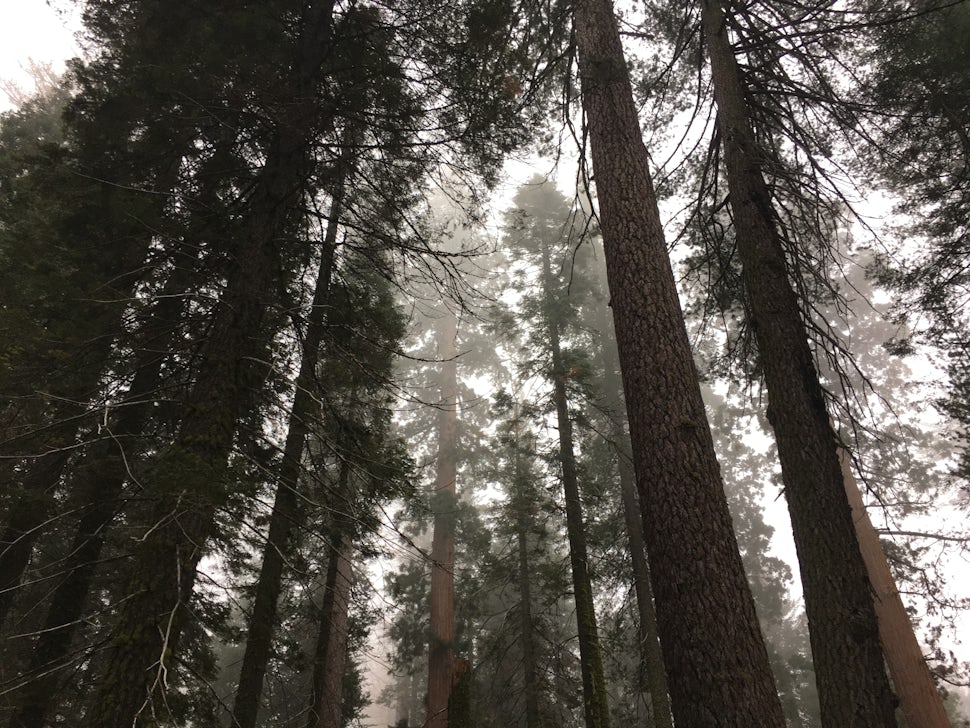5 Small Changes We Can Make to Save Our Parks
Witnessing people's minds being blown by nature's miracles in our national parks was my favorite part of guiding people from all around the world.

An exuberant, Jewish woman from Israel taught me Hebrew on the trail to the Giant Sequoias in Tuolomne Grove. I spoke with a 70-year-old Indian woman about oppression and good energy along that same trail. I contemplated spirit and the heavens with groups of people from all over the world. A lesbian couple from Switzerland were on their honeymoon and came to Yosemite just to see the “big trees!” The very first time I hiked the mile-long paved path through the redwoods and Giant Sequoias, I was shocked to silence at the sight of the behemoth trees.
I had the opportunity to tour guide on this bus and we stopped at Tuolomne Grove every weekend. I almost always chose to accompany the passengers to the bottom of the hill, by no requirement of my job. There is just something remarkable about standing, enveloped into a seemingly endless, outward and upward, forest of trees (some of which are thousands of years your senior). A silence falls upon most people at the sight of their first Giant Sequoia. There’s something magical, mysterious and almost spiritual about standing among the incredible Sequoias and redwood trees in real life.
You can already see the effects wildfires have had on Yosemite National Park; whole mountainsides are clear of trees except for a few charred trunks. Some fires are good for the trees, as they burn away enough to allow sunlight into the forests and make room for new plant life to grow. This New York Times article outlines how drought and climate change, along with the wildfires, endanger the 70-mile span of groves along the Sierra Nevada.
I came away with a few suggestions for visitors to Yosemite (and all national parks for that matter), after working in the park for five months.
1. Take the shuttles.
The National Park Service provides shuttles for good reason. Does anyone really want to sit in traffic in some of the most astounding landscapes in the country. While you may have to wait a few minutes at the stop, you will be saving the environment from your car exhaust and getting where you need to go much faster. Plus, when you do hike to the top of a mountain in Yosemite, the last thing you want to see is a traffic line snaking through the gorgeous view of the valley.
2. Don’t litter.
It’s hard for me to understand how plastic wrappers, aluminum cans and the like end up in the Merced River. I imagine people realize they are picnicking in a preserved wilderness and they should keep up with their trash. This is not always the case. One major thing we can all do right now is properly dispose of our personal waste and make an effort to use less plastic. You can bring a reusable water bottle and pack your lunch in reusable containers.
3. Stay on the trails.
Those signs asking you to keep to the beaten path are there for a reason. A park ranger once told me that the grass was dying because they were having a hard time keeping people from tramping through Tuolumne Meadows instead of using the trail. It not only ensures your safety, but it also keeps the plant life alive along the trails we love to hike.
4. Just driving through doesn't do you, nor the environment, any good.
I understand that everyone has their own story for why they love the national parks, as well as why and how they visit them. However, if you are capable of stepping out of your vehicle and explore these protected lands, you have no reason to simply look at them through the windshield. The more people who experience the wonder and unexplainable peacefulness that comes from nature, the more people would be speaking up to protect these places.
5. Stay involved if you want your grandkids to experience it.
I am, by no means, a planner. The future, in my eyes, is unpredictable and I have no desire to try to dictate it ahead of time. When it comes to nature, however, it is obvious that if we do not work to preserve it now, we will be in trouble. I keep up with the threats to public lands with weekly newsletters from The Sierra Club and The Wilderness Society. These are good sources for tracking down exactly what new legislation means for our parks and monuments. Donating to the National Park Foundation is another way you can help.
If you have a national park story (maybe your first family road trip was to the Grand Canyon or you hiked for the first time in Zion), you should share it with your representative and urge them to keep the public’s land safe from privatization.
You can use GovTrack to see what bills are being introduced and voted on in Congress.
We want to acknowledge and thank the past, present, and future generations of all Native Nations and Indigenous Peoples whose ancestral lands we travel, explore, and play on. Always practice Leave No Trace ethics on your adventures and follow local regulations. Please explore responsibly!
Do you love the outdoors?
Yep, us too. That's why we send you the best local adventures, stories, and expert advice, right to your inbox.







